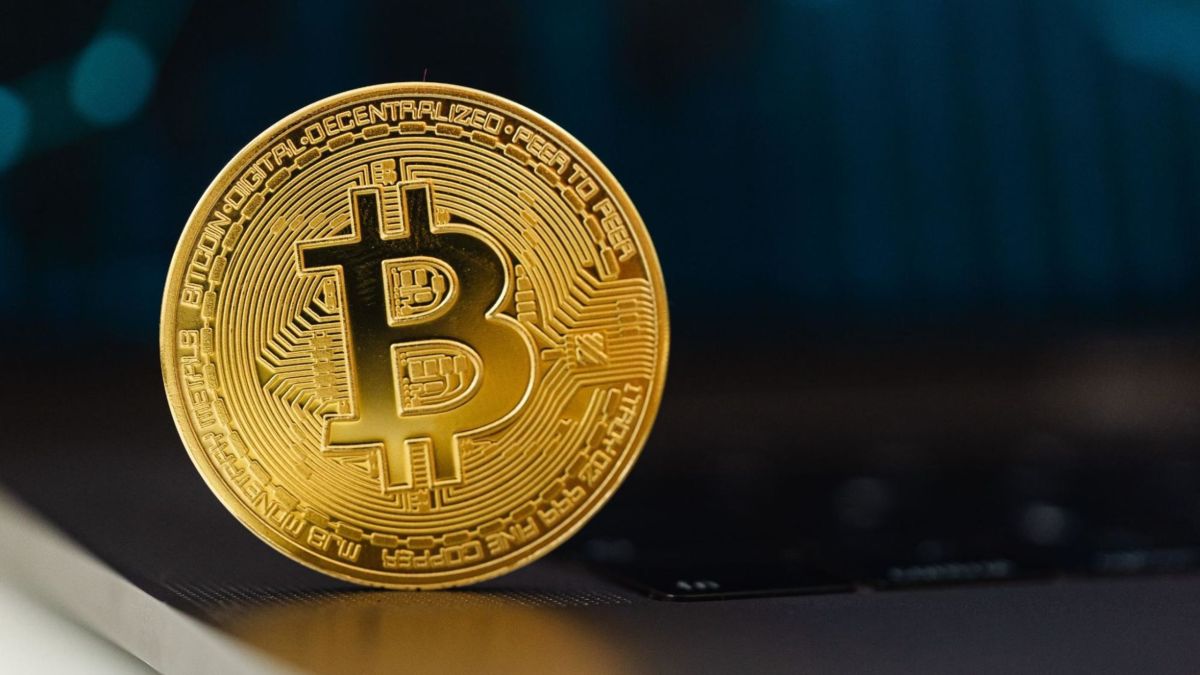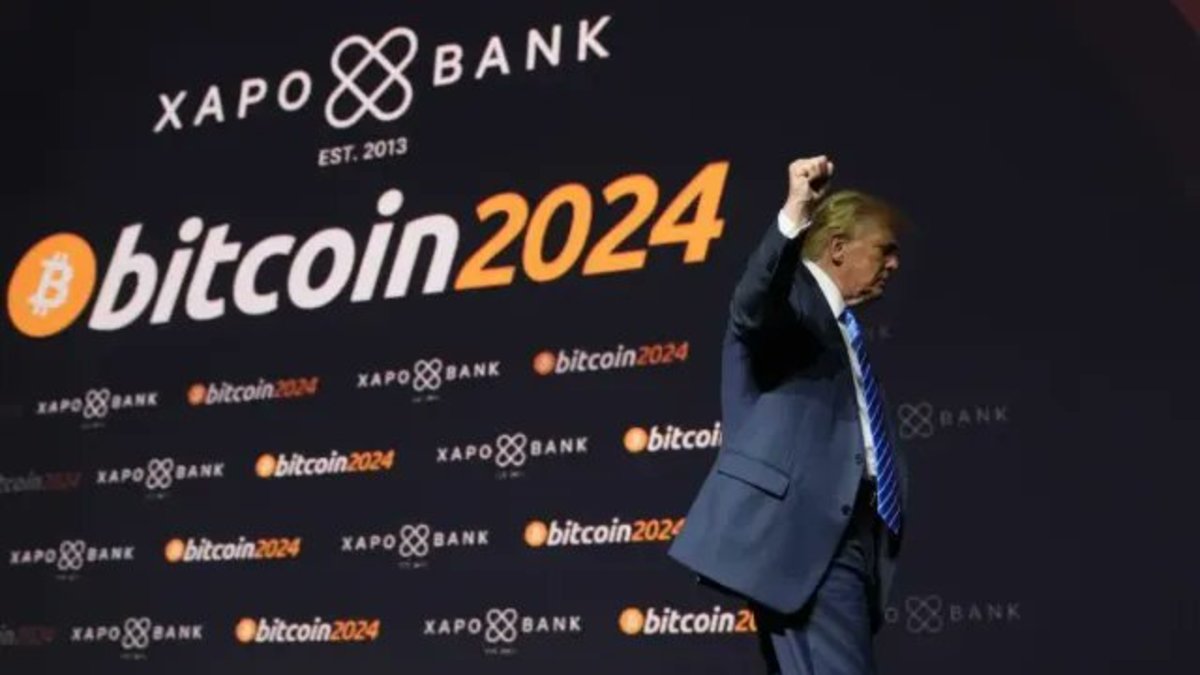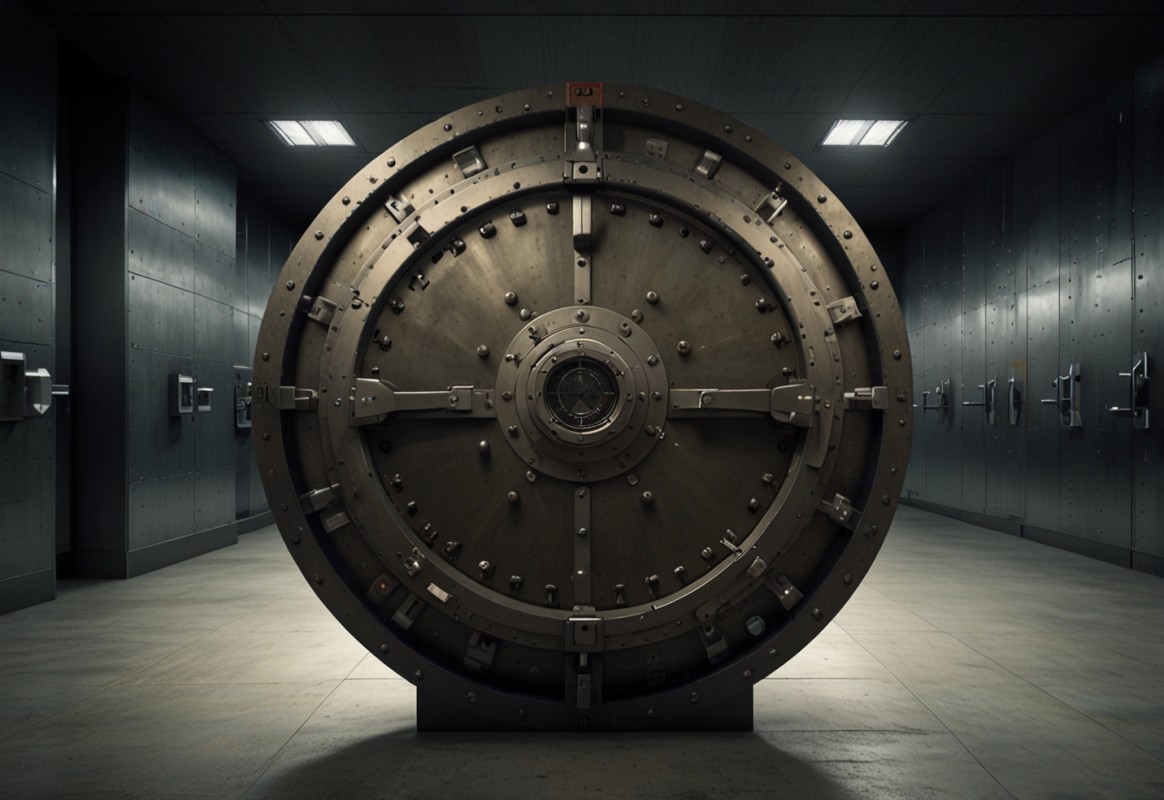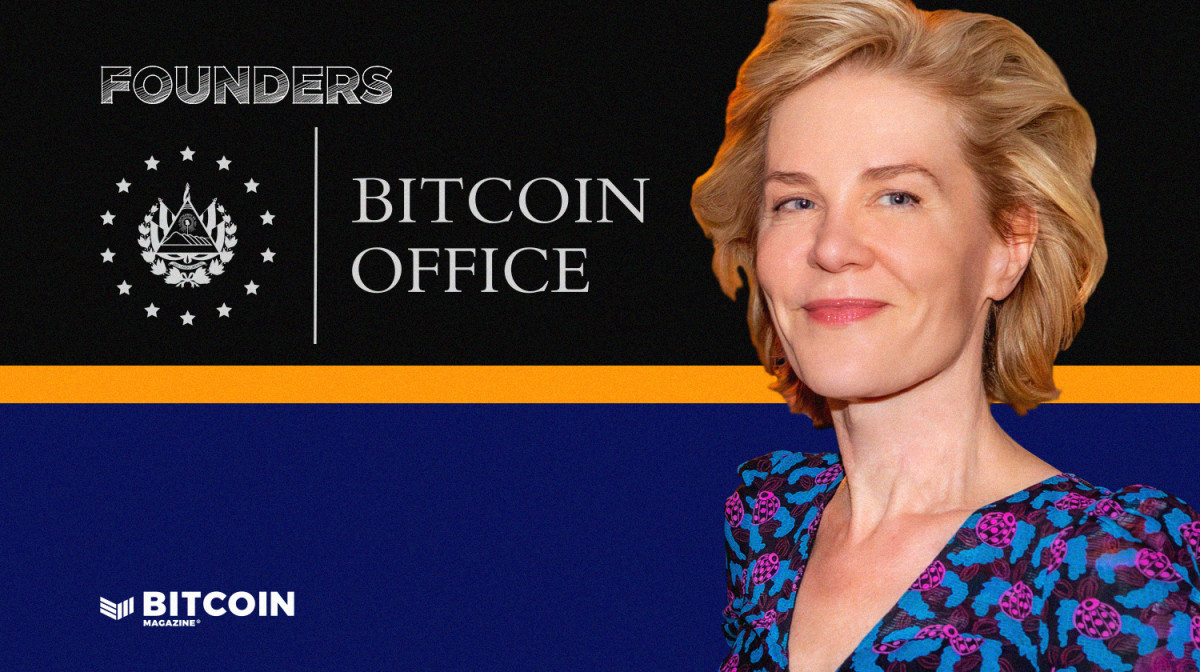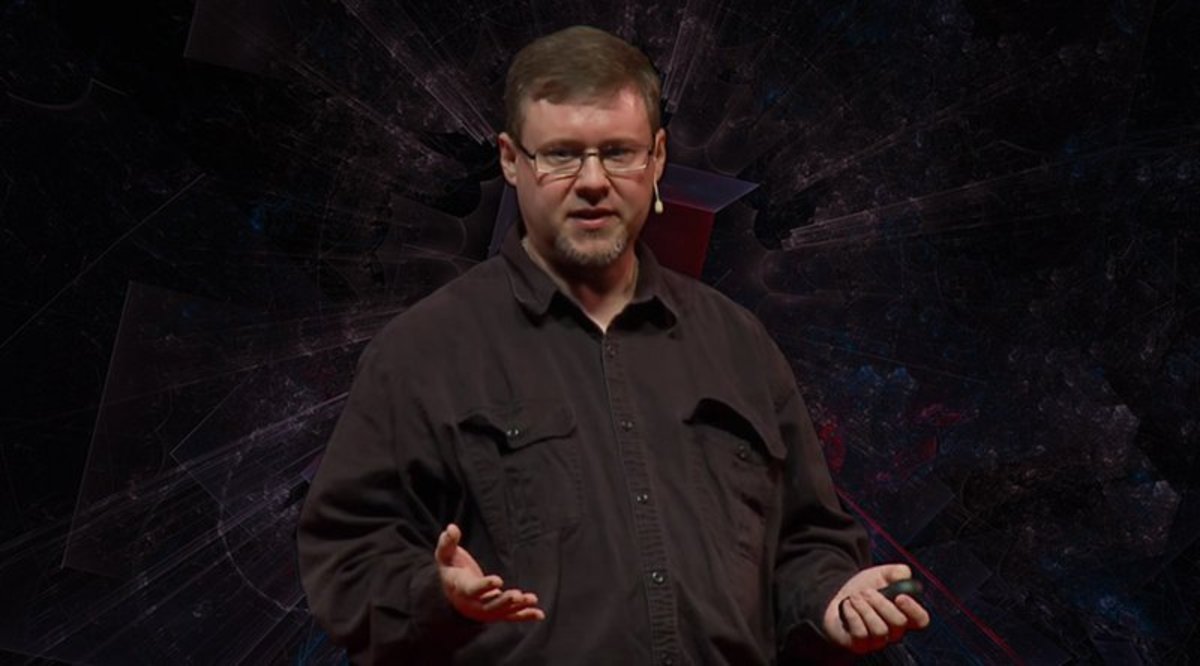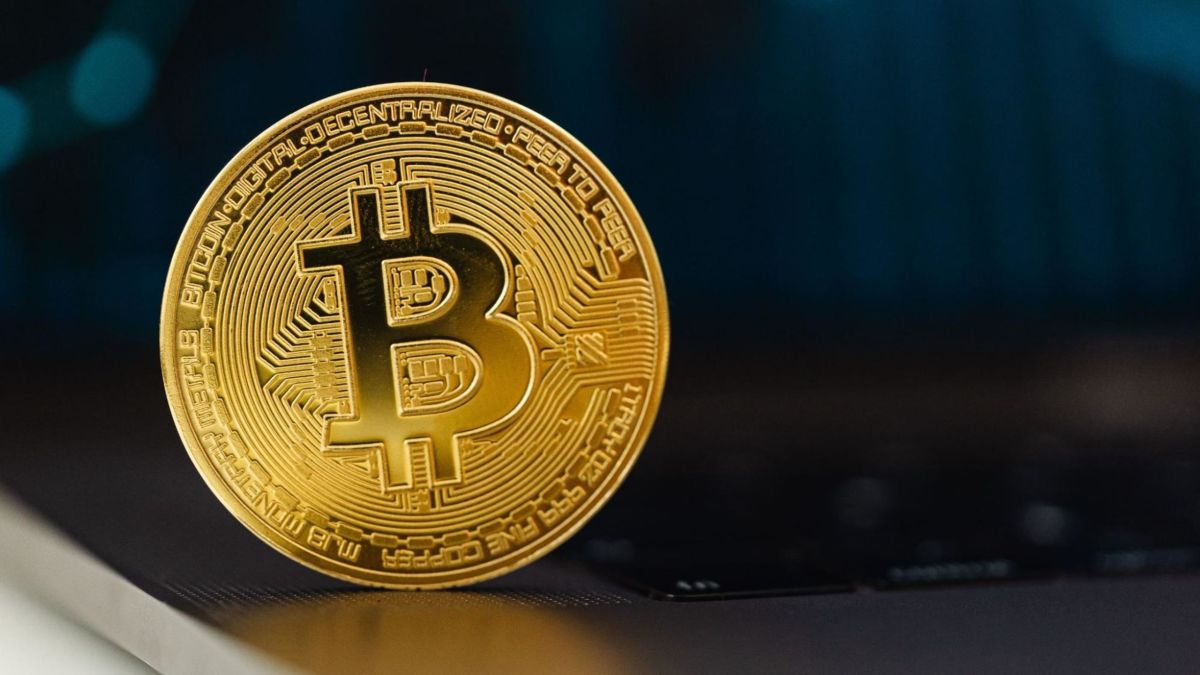Month: September 2024
Bitcoin and Crypto Exchange HTX To Integrate Lightning Network
HTX, one of the largest Bitcoin and crypto exchanges globally, announced it will be integrating the Bitcoin Lightning Network in partnership with Bitcoin firm IBEX.
JUST IN: Bitcoin and crypto exchange HTX to integrate #Bitcoin Lightning into its platform.
HTX has over 45 MILLION users 🚀 pic.twitter.com/mc1HEORJic
— Bitcoin Magazine (@BitcoinMagazine) September 13, 2024
With over 45 million registered users, HTX is a leading Bitcoin and crypto platform in Asia and worldwide based on trading volume and Bitcoin custody. The exchange now plans to incorporate Lightning Network capabilities into its ecosystem.
Lightning Network is a second-layer payments protocol built on top of Bitcoin. It enables near-instant transactions with significantly lower fees. Exchanges have long sought to implement Lightning to boost speed and affordability.
“Through this strategic partnership, HTX and IBEX will jointly promote the application and popularization of Bitcoin and Lightning Network technology worldwide, providing users with more efficient, secure, and convenient digital asset trading services,” said an HTX spokesperson.
By leveraging IBEX’s Lightning Network solution, HTX users will soon enjoy faster payments and withdrawals along with reduced transaction costs.
Lightning is finally going mainstream with adoption by Coinbase and now HTX. The Bitcoin community has long awaited Lightning adoption by leading exchanges to boost functionality. Now, HTX is delivering by leading the next wave of Lightning integration.
This shows the gradual maturation of Lightning Network technology and its increasing viability for mainstream Bitcoin platforms. As more exchanges implement Lightning payments, Bitcoin strengthens its position as an efficient medium for global, instantaneous transactions with negligible fees.
Asia FX firms with yen near 8-mth high; dollar down on rate cut bets
Post Content
Trump Election Victory Could Send Bitcoin to $125,000, Says Standard Chartered Analyst
According to Geoff Kendrick, Head of Crypto Research at Standard Chartered bank, a Donald Trump victory in the 2024 U.S. presidential election could drive Bitcoin to $125,000. However, Kendrick notes that new all-time highs (ATHs) for Bitcoin are likely no matter who wins the election, with Bitcoin still expected to hit $75,000 if Vice President Kamala Harris secures the presidency.
JUST IN: A Trump victory could send #Bitcoin to $125,000, but new ATHs are likely no matter who wins election, says Standard Chartered bank 🚀 pic.twitter.com/SfGoRSyKwn
— Bitcoin Magazine (@BitcoinMagazine) September 12, 2024
In the new report, Kendrick explained that while the outcome of the election will impact the Bitcoin industry, the risks of a Harris presidency may be overstated. “BTC will end 2024 at fresh all-time highs under either election outcome – [circa] $125,000 level under Trump or c.$75,000 level under Harris,” Kendrick wrote. While a Harris win could initially result in a price decline, he emphasized that “dips would be bought as the market recognizes that progress on the regulatory front will still be forthcoming.”
Despite concerns within the industry that Harris may adopt a more hostile stance toward Bitcoin, Kendrick believes that her administration would be “much less negative” for digital assets than a second Biden administration. Furthermore, Standard Chartered maintains its bullish outlook, forecasting that Bitcoin will hit $200,000 by the end of 2025, regardless of who wins this year’s election.
The 2024 election has drawn attention to the differing approaches to Bitcoin regulation by the two candidates. Trump has become an ally to the Bitcoin industry, speaking at the Bitcoin 2024 conference in Nashville this summer, where he expressed support for Bitcoin. The Republican National Committee has also included Bitcoin in its platform, pledging to defend the right to mine Bitcoin and protect self-custody.
In contrast, Vice President Kamala Harris has remained silent on the issue, opting not to attend the Bitcoin conference. The Democratic Party’s platform makes no mention of Bitcoin or cryptocurrency, which has led to concerns within the industry about the potential regulatory environment under a Harris administration. Although Harris has not publicly shown hostility to crypto, some fear a continuation of the stricter regulatory policies seen during President Joe Biden’s term, notably shaped by figures like Senator Elizabeth Warren and SEC Chair Gary Gensler.
Revolutionizing Bitcoin Mining: The Power of Three-Phase Systems
Bitcoin mining has seen exponential growth since the first ASIC miner was shipped in 2013, improving hardware efficiency from 1,200 J/TH to just 15 J/TH. While these advancements were driven by better chip technology, we’re now reaching the limits of silicon-based semiconductors. As further efficiency gains plateau, the focus must shift to optimizing other aspects of mining operations—particularly the power setup.
Three-phase power has emerged as a superior alternative to single-phase power in bitcoin mining. With more ASICs being designed for three-phase voltage input, future mining infrastructure should consider adopting a uniform 480v three-phase system, especially given its abundance and scalability across North America.
Understanding Single-Phase and Three-Phase Power
To comprehend the significance of three-phase power in bitcoin mining, it’s essential first to understand the basics of single-phase and three-phase power systems.
Single-phase power is the most common type of power supply used in residential settings. It consists of two wires: one live wire and one neutral wire. The voltage in a single-phase system oscillates sinusoidally, providing power that reaches a peak and then drops to zero twice during each cycle.
Imagine you are pushing a person on a swing. With each push, the swing moves forward and then comes back, reaching a peak height and then descending back to the lowest point before you push again.
Just like the swing, a single-phase power system has periods of maximum and zero power delivery. This can lead to inefficiencies, especially when consistent power is required, although this inefficiency is negligible in residential applications. However, it becomes significant in high-demand, industrial-scale operations like bitcoin mining.
Three-phase power, on the other hand, is commonly used in industrial and commercial settings. It consists of three live wires, providing a more constant and reliable power flow.
In the same swing analogy, imagine you have three people pushing the swing, but each person is pushing at different intervals. One person pushes the swing just as it starts to slow down from the first push, another pushes it a third of the way through the cycle, and the third person pushes it two-thirds of the way through. The result is a swing that moves much more smoothly and consistently because it’s being pushed continuously from different angles, maintaining a constant motion.
Similarly, a three-phase power system ensures a constant and balanced power flow, resulting in higher efficiency and reliability, particularly beneficial for high-demand applications like bitcoin mining.
The Evolution of Bitcoin Mining Power Requirements
Bitcoin mining has come a long way since its inception, with significant changes in power requirements over the years.
Before 2013, miners relied on CPUs and GPUs to mine bitcoins. The real game-changer came with the development of ASIC (Application-Specific Integrated Circuit) miners as the bitcoin network grew and competition increased. These devices are specifically designed for the purpose of mining bitcoins, offering unparalleled efficiency and performance. However, the increased power requirements of these machines necessitated advancements in power supply systems.
In 2016, a top-of-the-line miner was capable of computing 13 TH/s with a power consumption of approximately 1,300 watts (W). While considered highly inefficient by today’s standards, mining with this rig was profitable due to the low network competition at that time. However, to generate meaningful profits in today’s competitive landscape, institutional miners now rely on rigs that demand around 3,510 W.
The limitations of single-phase power systems has come to the fore as the power requirements of ASIC and the efficiency demands of high-performance mining operations grows. The transition to three-phase power became a logical step to support the growing energy needs of the industry.
480v Three-Phase in Bitcoin Mining
Efficiency First
480v three-phase power has long been the standard in industrial settings across North America, South America, and other regions. This widespread adoption is due to its numerous benefits in terms of efficiency, cost savings, and scalability. The consistency and reliability of 480v three-phase power make it ideal for operations that demand greater operational uptime and fleet efficiency, especially in a post-halving world.
One of the primary benefits of three-phase power is its ability to deliver higher power density, which reduces energy losses and ensures that mining equipment operates at optimal performance levels.
Additionally, implementing a three-phase power system can lead to significant savings in electrical infrastructure costs. Fewer transformers, smaller wiring, and reduced need for voltage stabilization equipment contribute to lower installation and maintenance expenses.
For example, a load requiring 17.3 kilowatts of power at 208v three-phase would need a current of 48 amps. However, if the same load is supplied by a 480v source, the current requirement drops to just 24 amps. This halving of the current not only reduces power loss but also minimizes the need for thicker, more expensive wiring.
Scalability
As mining operations expand, the ability to easily add more capacity without major overhauls to the power infrastructure is crucial. The high availability of systems and components designed for 480v three-phase power makes it easier for miners to scale their operations efficiently.
As the bitcoin mining industry evolves, there is a clear trend towards the development of more three-phase compliant ASICs. Designing mining facilities with a 480v three-phase configuration not only addresses current inefficiencies but also future-proofs the infrastructure. This allows miners to seamlessly integrate newer technologies that are likely to be designed with three-phase power compatibility in mind.
As shown in the table below, the immersion-cooling and hydro-cooling techniques are superior methods in scaling up bitcoin mining operations in terms of reaching higher hashrate output. But to support such a much higher computation capacity, the configuration of three-phase power becomes necessary for maintaining a similar level of power efficiency. In short, this will lead to a higher operational profit with the same profit margin percentage.
Implementing Three-Phase Power in Bitcoin Mining Operations
Transitioning to a three-phase power system requires careful planning and execution. Here are the key steps involved in implementing three-phase power in bitcoin mining operations.
Assessing Power Requirements
The first step in implementing a three-phase power system is to assess the power requirements of the mining operation. This involves calculating the total power consumption of all mining equipment and determining the appropriate capacity for the power system.
Upgrading Electrical Infrastructure
Upgrading the electrical infrastructure to support a three-phase power system may involve installing new transformers, wiring, and circuit breakers. It’s essential to work with qualified electrical engineers to ensure that the installation meets safety and regulatory standards.
Configuring ASIC Miners for Three-Phase Power
Many modern ASIC miners are designed to operate on three-phase power. However, older models may require modifications or the use of power conversion equipment. Configuring the miners to run on three-phase power is a critical step in maximizing efficiency.
Implementing Redundancy and Backup Systems
To ensure uninterrupted mining operations, it’s essential to implement redundancy and backup systems. This includes installing backup generators, uninterruptible power supplies, and redundant power circuits to protect against power outages and equipment failures.
Monitoring and Maintenance
Once the three-phase power system is operational, continuous monitoring and maintenance are crucial to ensure optimal performance. Regular inspections, load balancing, and proactive maintenance can help identify and address potential issues before they impact operations.
Conclusion
The future of bitcoin mining lies in the efficient utilization of power resources. As advancements in chip processing technologies reach their limits, focusing on power setup becomes increasingly critical. Three-phase power, particularly a 480v system, offers numerous advantages that can revolutionize bitcoin mining operations.
By providing higher power density, improved efficiency, reduced infrastructure costs, and scalability, three-phase power systems can support the growing demands of the mining industry. Implementing such a system requires careful planning and execution, but the benefits far outweigh the challenges.
As the bitcoin mining industry continues to evolve, embracing three-phase power can pave the way for more sustainable and profitable operations. With the right infrastructure in place, miners can harness the full potential of their equipment and stay ahead in the competitive world of bitcoin mining.
This is a guest post by Christian Lucas, Strategy at Bitdeer. Opinions expressed are entirely their own and do not necessarily reflect those of BTC Inc or Bitcoin Magazine.
Asia FX muted, dollar strong as sticky CPI fuels bets on smaller rate cut
Post Content
Bitcoin Vaults and the Future of Bitcoin Custody
Bitcoin, the original cryptocurrency, has come a long way from its informal past. From an experimental digital currency that occupied cypherpunk niches on the internet, it has grown to a trillion-dollar market cap asset valued at over $66,900 per coin as of this writing.
While investing in Bitcoin is still considered a wild ride, the asset is quickly maturing. Financial institutions are closing in and creating hybrid vehicles to invest in cryptocurrency. The ecosystem reached a new milestone with the advent of Bitcoin ETFs, making people realize the immensity of Bitcoin’s potential in traditional markets and spurring new demand.
As more people and institutions invest in Bitcoin, Bitcoin vaults become more crucial. Here, we examine the features and importance of Bitcoin vaults and how they contribute to ensuring a reliable infrastructure that promotes sustained value and investability.
We explore their role in professionalized and institutional custody. Secure custodians are vital to protecting digital assets from theft and loss. This article also tracks the fast-advancing technology of Bitcoin vaults and how it relates to future developments in the custody space.
What are Bitcoin vaults, and how do they work?
Bitcoin vaults are offline digital asset storage solutions offering enhanced protection against online threats. This protection is created through multiple security layers.
As the Bitcoin investment sphere grows, new products are being created. Bitcoin vaults are a critical component of these new financial products. While hot wallets and exchange accounts offer easy transaction access, they are vulnerable to hacks.
Bitcoin vaults are fortified digital safes. They protect your Bitcoin by taking it offline and shielding it from the constant openness to online attacks. Their multiple layers of security include withdrawal delays, multi-signature or multisig authentication, and cold storage solutions.
One highly secure approach to Bitcoin or crypto vaults is called air-gapping. Air-gapped storage offers robust protection against malware attacks, phishing scams, and unauthorized access.
Many Bitcoin vaults integrate advanced encryption techniques. They typically require multiple authorizations for transactions to proceed. Advanced encryption and the need for layered authorization steps bolster security posture.
As a Bitcoin investor, ensuring that your coins are kept in air-gapped and layered security vaults protects your investment and helps you hold it long-term.
Vaults: Vital Components of Bitcoin Custody
Bitcoin vaults are a component of Bitcoin custody solutions. Bitcoin custody is the entire process of holding and securing BTC.
Because Bitcoin is a digital asset, it requires unique storage solutions to protect it from theft and loss. As BTC’s value rises, so does the interest from cybercriminals and hackers. Therefore, secure custody solutions are essential for protecting these digital assets.
The Advanced Technology Behind Bitcoin Vaults
The following advanced technologies combine to create the security behind Bitcoin vaults. Understanding them helps you understand, evaluate, and appreciate their robustness.
Cold Storage
Cold storage is a security method that keeps Bitcoin offline or away from internet-connected devices. Being offline reduces the risk of cyberattacks. Bitcoin cold storage is often used with multi-sig technology to provide maximum security.
Multi-Signature Technology
Multi-signature or multisig technology requires multiple private keys to authorize a Bitcoin transaction. This method implies that even as one key is compromised, the Bitcoin in the wallet cannot be transferred. The transaction still requires the other keys to be approved.
Multisig technology enhances security by distributing ownership and control over Bitcoin. It makes it very challenging for a single entity to access or steal the assets.
Hardware Security Modules (HSMs)
Hardware Security Modules (HSMs) are tamper-resistant and hardened devices that secure cryptographic processes. They generate, protect, and manage keys used for data encryption and decryption, as well as digital certificates and signatures.
These specialized devices, in other words, are designed to protect and manage your digital keys. They provide a secure environment for cryptographic key generation, storage, and usage, ensuring that the private keys are never exposed to potential threats. HSMs are often used in Bitcoin vaults to enhance the security of the stored assets.
HSMs are recommended for those with significant BTC holdings. They are also ideal for businesses handling Bitcoin and other crypto. While integration can be complex and require continued maintenance, the security benefits far outweigh the cost for those with high-value holdings.
Furthermore, HSMS are tested, validated, and certified to the highest standards. They enable organizations to meet and exceed emerging and established regulatory requirements for cybersecurity.
Companies Offering BTC Custody Solutions
As Bitcoin and its related financial products gain popularity, so does the need for reliable custody. Companies that offer this service are called Bitcoin or crypto custodians and are a critical component of the digital asset industry.
These companies or platforms offer secure BTC and crypto storage and provide services such as private key management, online security solutions, and transaction processing.
Crypto custodians are gaining prominence as the cryptocurrency market grows. They are essential in ensuring that assets are stored and managed securely. Moreover, they protect investors’ funds by providing layers of security beyond what public wallets or exchanges offer.
However, it must be noted that exchanges, trading desks, and investment platforms run their own custody solutions. In addition, some exchanges are also the most noted custody providers. Examples of top custody providers, most of which offer investment access, include Swan Bitcoin, BitGo, Coinbase Custody, Anchorage, Gemini Custody, Bakkt, and Bitcoin Suisse.
How To Choose Among BTC Custody Providers
Several companies are competing in the crypto custody market. If you are a regular BTC trader or investor, you might be curious about how to choose what works for you.
Platforms should enable users to buy and store Bitcoin easily. While popular exchanges like Binance and Kraken offer a wide range of services, including retail buying and selling of crypto, they have downsides. They may not provide the best storage options for your crypto, and they may be more vulnerable and open to various hacks.
Long-term BTC investors usually shun day trading and prefer the buy-and-hold strategy. Swan Bitcoin is a low-fee platform specializing in BTC-specific investments. It offers a full suite of BTC financial services, including Swan Vault, simplifying BTC storage for users. If you’re curious how it compares to large global exchanges, check out the Kraken review on Swan Bitcoin’s site.
The best Bitcoin vaults give you complete control over your coins, with user-friendly and straightforward features for setup, deposits, and withdrawals. They use the most reliable hardware to provide users with the most robust security. An example of such hardware is the Blockstream Jade signing device, a hardware wallet used by Swan Bitcoin to ensure BTC owners’ full access to keys offline.
You need signing devices that store two private keys to unlock a Swan Vault. Swan manages a third key called the Cloud Key, which is recommended for use as a second key to prevent bringing both hardware signing devices to the same location.
Bitcoin vaults must have sound recovery strategies for BTC theft or loss, as 72-hour holds for Cloud Key withdrawals. Moreover, these vaults need to offer comprehensive support services, including secure storage of spare keys to assist you in moving funds and customer support manned by trained specialists.
When Investing in BTC, Choose a Reliable Custodian
Bitcoin vaults are becoming increasingly important as more people and institutions invest in Bitcoin. As digital assets gain legitimacy through legalized financial products, security custody solutions become increasingly vital to protect them from theft and loss.
By leveraging advanced technologies such as multi-signature authentication, cold storage, and Hardware Security Modules, Bitcoin vaults provide a robust security solution for digital assets. In addition, multi-layered features ensure secure storage of private keys and means of recovery in case keys are lost or stolen.
Bitcoin vaults are not just meant to store BTC securely. They form the bedrock of the asset’s long-term viability as an investment vehicle.
It is not enough to leave the knowledge to technical experts or institutions. By understanding the importance of secure Bitcoin storage and the advancements in custody solutions, investors can make better-informed decisions about safeguarding their digital assets.
This is a guest post by Ivan Serrano. Opinions expressed are entirely their own and do not necessarily reflect those of BTC Inc or Bitcoin Magazine.
UK Parliament Introduces Bill to Recognize Bitcoin and Crypto as Personal Property
The UK Parliament has introduced the Property (Digital Assets etc) Bill today to officially and legally recognize Bitcoin, cryptocurrency, and other digital assets as personal property. With this new legislation, for the first time, British law would officially protect digital holdings such as Bitcoin and other cryptocurrencies, non-fungible tokens (NFTs), and carbon credits.
“It is essential that the law keeps pace with evolving technologies and this legislation will mean that the sector can maintain its position as a global leader in cryptoassets and bring clarity to complex property cases,” said Justice Minister Heidi Alexander. “Our world-leading legal services form a vital part of our economy, helping to drive forward growth and keep Britain at the heart of the international legal industry.”
This bill aims to address a long-standing legal gap, where digital assets were previously excluded from English and Welsh property law. As a result, owners of digital assets had little recourse if their holdings were interfered with, leaving them in a legal grey area.
Under the new bill, digital assets will be classified as a third category of property, allowing owners to benefit from stronger legal protections against fraud and theft. The legislation will also assist courts in resolving complex disputes, such as those arising in divorce settlements or business agreements involving digital assets.
“The Bill will also ensure Britain maintains its pole position in the emerging global crypto race by being one of the first countries to recognise these assets in law,” stated the announcement.
The UK government further explained that with this new legislation, their legal sector will be better equipped to respond to these new technologies and attract more business and investment to the legal services industry.
“The UK has passed a new bill that will allow crypto and other digital assets to be recognised as personal property,” stated the UK Ministry of Justice X account. “That means owners of digital assets will gain legal protection against fraud and scams.”
El Salvador’s Bitcoin Office Celebrates 21 Months of Success, Sets Stage for Renaissance 2.0
“Someone needs to be the keeper and reiterator of the vision. There’s a ton of work to do. When you have to walk a thousand miles and have only taken the first step, it feels like a long way. It really helps if there is someone saying, ‘We are one step closer, and the goal is not a mirage.’” -Steve Jobs
Stacy Herbert, Director of the National Bitcoin Office (ONBTC) of the Office of the President of El Salvador, shared the above quote with me, while beaming with both pride and resolve, at the onset of my interview with her.
It’s clear that Herbert is on a mission, a mission that started in 2010 when she and her partner, Max Keiser, first discovered Bitcoin and became some of the earliest spokespeople for it soon after. This mission now includes the President of El Salvador, Nayib Bukele, as well as the bureaucracy and citizens of El Salvador, which has colloquially become known as “Bitcoin country” in Bitcoin circles.
By many metrics, The Bitcoin Office has already achieved much success since its founding in December 2022. It’s stockpiled 5,836 bitcoin on behalf of the country. It’s educated 80,000 Salvadoran civil servants on what Bitcoin is and why it’s important. It’s helped implement Bitcoin education from kindergarten to university levels through programs like Mi Primer Bitcoin and CUBO+. And it’s attracted entrepreneurs, investors and other bright minds to the country.
While Herbert is proud of these accomplishments, she’s not one to rest on her laurels, especially since she believes that El Salvador’s best days still lie ahead. She has a vision that further Bitcoin adoption in El Salvador will set the stage for a new renaissance, one that will uplift Salvadorans and continue to attract the world’s best to the country. Given the obstacles she’s overcome since first arriving in the country three years ago, it’s difficult to believe she won’t continue to do her part to make this new era for El Salvador happen.
Getting Started in El Salvador
Herbert arrived with Keiser in El Salvador toward the latter part of 2021, near the height of that same year’s bitcoin bull market. Euphoria gave way to despair into 2022, though, when bitcoin’s price tanked in part as a result of broader meltdown in the crypto space.
“When we first arrived three years ago, bitcoin hit $69,000 and then it proceeded to tumble down to something like $16,000,” Herbert told Bitcoin Magazine.
This left Herbert and Keiser tasked with the challenge of explaining to Salvadorans that the collapse of major crypto companies didn’t mean that Bitcoin was dead, nor that it was a mirage.
“FTX collapsed, BlockFi collapsed, and Celsius collapsed,” explained Herbert. “When they saw all those collapses, they thought that it was the same thing as Bitcoin — all these scams, all these frauds.”
Herbert recalled the importance of steering El Salvador in a bitcoin-not-crypto path at that time.
“There were two paths: You could be crypto country or you could be Bitcoin country,” said Herbert.
“With crypto country, you’re competing with Vegas; you’re competing with Macau. The house always wins in those situations. And that’s the same thing if you have a crypto economy. You have some wealthy guys who run the house. The pre-mines, the chip owners, the chip dispensers, they always win,” she added, making the point that she didn’t want to see El Salvador exploited by the crypto industry.
“Or you could go down the route of what Switzerland was to gold, or New York became to US Treasuries. You could build capital markets. You could build an economy. You could build a Singapore 2.0, an Alexandria 2.0, a Florence 2.0. We pushed for this vision.”
Renaissance 2.0
In the vision that Herbert shares with President Bukele and Keiser, a senior advisor to Bukele, El Salvador is in the early stages of ushering in one of the greatest eras of human flourishing the world has ever seen.
Much like the Renaissance, which occurred in what is now northern Italy just over 500 years ago, El Salvador is setting the stage for its own explosion of entrepreneurship and creativity by adopting that hardest money ever known to man.
“Florence first didn’t just didn’t have DaVinci and Michelangelo and Botticelli and all of the architects, the discoverers, the explorers, the astronomers, and then find perfect money,” explained Herbert.
“They found the perfect money of the time — the Florin — and that led to a positive feedback loop of ever more wealth concentrating in Florence versus the other city states of what is now Italy and other regions across Europe,” she added, before sharing that great artists, businesspeople and thinkers flocked to Florence in the wake of its becoming a commercial center.
“We think that same sort of process could happen in El Salvador.”
Embracing Bukele’s Vision
Herbert shared repeatedly in our discussion how El Salvador’s transformation couldn’t have happened without the leadership of Bukele, whose approval rating amongst Salvadorans is still above 90%, making him one of the most popular presidents in the world.
A challenge for the ONBTC now, she claims, is getting the rest of the country to see and embrace his vision.
“You can’t just have President Bukele [believing in Bitcoin],” explained Herbert.
“You need at least a portion of his 80,000 civil servants to understand what he is actually trying to achieve. Remember, as the keeper of the vision, we have to pull everybody along to understand President Bukele’s vision for El Salvador,” she added.
In efforts to get the rest of the country on board, Herbert has hired well-known Bitcoin figures to educate and train Salvadoran Bitcoin developers as well as members of the Salvadoran government.
This work started with Bitcoin developer Jimmy Song coming to El Salvador in March 2022 (before the ONBTC was officially established) to teach developers how to work on Bitcoin Core.
“Jimmy Song taught his Bitcoin course to seven Salvadorans,” recalled Herbert. “One of them was a guy named Mario Flamenco, who ended up becoming my assistant, my number two at the Bitcoin office.”
Giacomo Zucco also came on board to not only teach developers, but also provided three days of Bitcoin education to El Salvador’s civil servants. Herbert explained that the educational efforts are not just to provide El Salvador’s bureaucrats with a deep technical knowledge of Bitcoin, but to reshape their mindset.
“They’re the people that interact with the population,” said Herbert of El Salvador’s civil servants, “so, they need to understand why they are Bitcoin country in terms of the mindset.”
Herbert often referred to the importance of mindset during our discussion. She explained that the work the ONBTC does is about more than just helping people to understand what Bitcoin is, but it’s about mentally and emotionally prepping them to be great.
“In order to be extraordinary, [you have to have] people in the government and in the population who are ready to be extraordinary,” she said.
“We’re training a population to have the mindset to be Florence 2.0, to be Singapore 2.0 — to be something extraordinary,” she added.
“You need everybody to be on the same page in terms of just how important they are. What we’re doing here is extraordinary. What President Bukele has delivered to the country is quite extraordinary.”
Passport Programs
Through ONBTC, Bukele is prepping Salvadorans for great things, while through El Salvador’s passport programs, he’s looking to attract those who have a track record of doing great things.
On April 6, 2024, Bukele announced that El Salvador would issue 5,000 passports to the likes of scientists, doctors and even philosophers.
We’re offering 5,000 free passports (equivalent to $5 billion in our passport program) to highly skilled scientists, engineers, doctors, artists, and philosophers from abroad.
This represents less than 0.1% of our population, so granting them full citizen status, including…
— Nayib Bukele (@nayibbukele) April 6, 2024
As Bukele shared in his tweet, these 5,000 passports are technically worth $5 billion. El Salvador now issues passports nearly instantly for those who make a $1 million investment in the country with either BTC or USDT.
While this program was designed to attract top talent from abroad, it also had positive effects on the psychology of the Salvadoran people, according to Herbert.
“What we did with the million dollar price tag worked,” said Herbert.
“If you go back, Salvadoran people started saying, ‘My God, some people were paying $10,000 to coyotes to take them over the border in the US, and my passport is worth $1 million.’ Even if a thousand Salvadorans think that, it changes the mindset enough that it’s a critical seed of change,” she added.
What’s Next for The Bitcoin Office?
Herbert said that ONBTC has some big announcements coming in the next three to four weeks. For now, though, the ONBTC is focused on unveiling the first Bitcoin banks, which she believes will help El Salvador build capital markets.
“Bitcoin banks will come here, and we’ll start seriously building the capital markets that are needed — like we’ve laid the foundation for greatness over the past 21 months,” said Herbert.
Beyond Bitcoin banks, Herbert seems confident that the sky’s the limit as far as what comes next for El Salvador. Thanks to the ONBTC, a foundation has been set for the revitalization of the country.
“We have the education, we have the mindset, we have the rebrand — the greatest rebrand in history — as I call it for El Salvador, and we have an increasing amount of popularity for President Bukele, because he keeps winning,” she said. “We’ve walked a thousand miles in the last 21 months, and we now have another thousand-mile journey to start.”
Editor’s note: We normally profile founders of startups for our Founders series, but, this week, we chose to profile the head of a government institution who’s led that institutions since its inception.
Early Bitcoin Developer Backs Satoshi Nakamoto Theory
Jeff Garzik, a veteran Linux contributor and early open-source developer who contributed to the Bitcoin project from 2010 to 2017, has released a series of new videos detailing his time working with Bitcoin’s anonymous inventor Satoshi Nakamoto.
Joining the project in July 2010, Garzik contributed to early software releases, entering notable pull requests including the first proposal to raise the block size limit, as well as the first proposal to eliminate subsidies for free transactions. Under Satoshi’s time as maintainer, Garzik had pull requests accepted, including for work separating the mining code from the Satoshi client.
Most notably, the new videos find Garzik sharing recollections about his time with Satoshi, including new commentary on whether Satoshi was indeed a singular individual or a group.
“Satoshi as a coder, he’s more the ‘A Beautiful Mind’ type lone genius,” Garzik recalls.
“When I was a computer science major, we thought highly of ourselves as coders, and we would notice that some of the other disciplines, the chemists, the biologists, the physicists, they had to do it, but they didn’t approach it as a profession. Satoshi was the same way.”
In this way, Garzik says he believes Satoshi knew what problem he wanted to solve, but that lacked an understanding of “modularity,” “unit testing,” and other basics that “computer science majors learn.”
“He very wisely pulled cryptographic solutions off the shelf that were well known, well studied, and he put all those together in a new and interesting way,” Garzik said, adding:
“My impression was that he studied existing people on the internet and tried to think how to combine existing crypto primitives in field use to create Bitcoin.”
Elsewhere, Garzik attested to his belief that Satoshi was a “self-taught” programmer, arguing Bitcoin’s founder was humble about his limitations.
In other statements he spoke to Satoshi’s temperament and working methods, noting his strict focus on Bitcoin.
“Satoshi would never stray from that topic. He would never let slip any personal information whatsoever, never talk about his mood, the time of day,” he says in one clip. “It was always 100% all about Bitcoin.”
All told, the recollections cover a period of 6 months through Nakamoto’s resignation from the project in January 2011, at which point Garzik’s friend and collaborator Gavin Andresen took over as lead maintainer.
The videos come during a year in which other early Bitcoin contributors have gone public in releasing correspondence with Satoshi, with Martti ‘Sirius’ Malmi and Adam Back publishing hundreds of pages of never-before-seen emails in connection with a public trial in the U.K.
While Garzik has yet to release emails with Satoshi, the videos, produced by a new venture he founded, Hemi Network, represent the most public discussion the developer has had on the subject in some time.
Launched in July, the Hemi Network is advertised as “a modular Layer-2 protocol for superior scaling, security, and interoperability, powered by Bitcoin and Ethereum.”
The work follows a period after 2017 in which Garzik has become more interested in blockchain networks that are not tied to any specific base layer cryptocurrency, a path that includes Metronome, a project from 2017 that also sought compatibility with multiple blockchains.
Garzik left the Bitcoin project that year after serving as the lead maintainer for a hard fork of the Bitcoin protocol that despite early startup ecosystem support never formally launched.
The full video playlist can be accessed below:
Bitcoin Mining Difficulty Hits Record 92 Trillion
The Bitcoin mining difficulty reached a new all-time high of 92.67 trillion on September 11. This represents a 3.04% increase over the last 24 hours and continues an upward trajectory in mining competition.
JUST IN: #Bitcoin mining difficulty hit a NEW ALL-TIME HIGH 🚀 pic.twitter.com/vhq0ClEXRW
— Bitcoin Magazine (@BitcoinMagazine) September 11, 2024
The Bitcoin difficulty chart plots the historical increases and decreases in mining difficulty over time. It measures how hard it is for miners to find a valid hash for the next block. Higher difficulty requires more computing power to mine new Bitcoin.
When combined with the Bitcoin price, difficulty helps determine miners’ profitability and return on investment. The metric soared in 2024 amid massive growth in Bitcoin’s overall hash rate and adoption.
The rising difficulty shows intensifying competition on the Bitcoin network as more miners fight for limited block rewards. This is generally constructive for network security and decentralization.
Despite rough market conditions this year, the difficulty increase displays the unprecedented demand for Bitcoin block rewards. It underlines the incredible security offered by the collective computing power of miners around the world.
The difficulty adjustment algorithm built into Bitcoin’s code dictates the pace of change in mining competition. It is programmed to find blocks approximately every 10 minutes, maintaining a steady influx of new Bitcoin over time.
This predictable Bitcoin issuance schedule makes its inflation rate easy to model and appeals to investors compared to fiat currencies subject to central bank policies.
